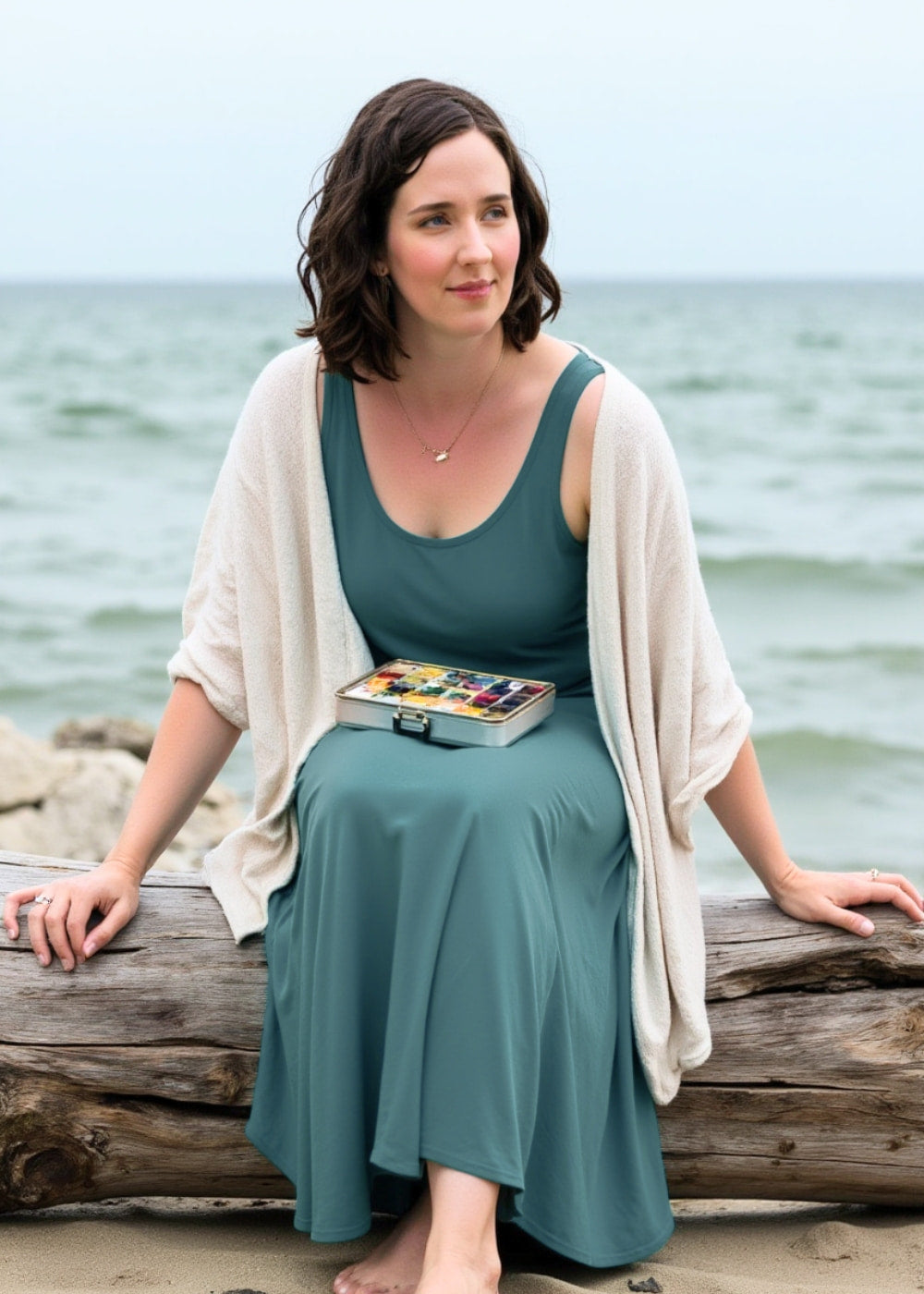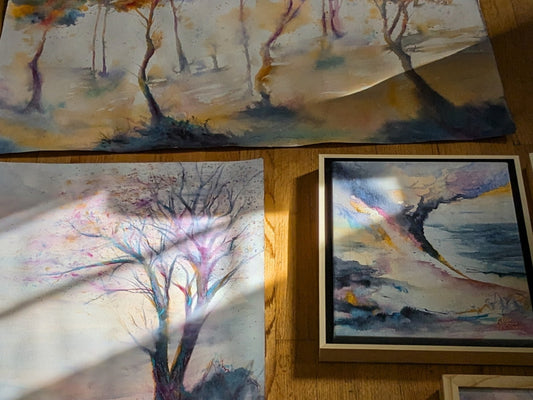
On Art, Burnout, and "Authenticity"
Share
What I Was Thinking
Skip the regularly scheduled programming. Let’s have some real talk.
I’ve been thinking a lot lately about what it looks like to be real, human, authentic in an increasingly technological and all too often soulless world.
We put a premium on authenticity, don’t we? It’s sort of a cultural buzzword: be yourself, be real, be authentic, find your path, "manifest your desires." As AI becomes more and more prevalent, it’s going to become more and more important, because it’s harder and harder to tell what’s real.
But here’s the thing. We say this, and expect this, from an endless stream of content from a nearly endless stream of “content creators” who are mostly, absolutely, utterly exhausted....and far less in control of the results than anyone wants to admit.
Why It Matters
We see the beautiful pictures of the places the influencers have traveled, and their beautiful clothes, and their expensive laptops / cameras / houses / watches / sneakers / you get the point. You see them walking, or dancing, or cooking, or painting (hello, fellow artists!) and when it’s done well, you feel like you’re right there, watching them. Look how authentic they are!
You aspire to be like them. There’s a part of you that thinks, “If I just buy that product, or that course, or that service…maybe my life will look a little more like that.”
But we don’t usually stop to think about what’s on the other side of the camera. We don’t even stop to think about the fact that there IS a camera, or even several cameras, or a whole camera crew.
Those cool videos you see on Instagram or TikTok? They’re not real. They’re not authentic. They’re branded, curated, rehearsed. They are scripted out days or weeks in advance. The clothes are carefully planned, purchased, maybe tailored, maybe just held together with bulldog clips in the back. They’re edited to the moon and back.
They’re beautiful. But the more beautiful it is, and the more “authentic” it looks? The less likely to actually be real.
A year or two ago, my husband and I were parked in a strip mall parking lot. We were there to grab sandwiches. We looked out the window and saw a pair of young girls dancing. It was heartwarming for a minute—oh, look how happy they are! And then they stopped dancing, ran over to a phone they’d propped up on a bench, reviewed their footage, shook their heads, and tried again.
I’m thinking about these things because I, like millions or billions of other people, use social media to market what I care about: the art I make, the meaning behind it, like pouring my soul out onto paper or canvas and then putting it on display for strangers. Will they like the art? Will they like me? Is the way I present it polished enough, curated enough, recognizable enough? Is it good enough to get weary people to stop scrolling and LOOK at something, just for a second?
The answer is usually no. So I try again. And again. And again.
The problem for all of us is that in our search for authenticity in our online expressions, experiences, and consumption, we're becoming LESS authentic as real human souls in real human bodies. Who among us hasn’t judged the parents at the restaurant for staring at the phone instead of talking to their kids? And yet, we’ve all done it. It’s hard not to.
We worry about AI taking over and making things less real.
Ironically, I think one of the most promising aspects of AI technology is the ability to make our real human lives MORE real by taking some of that time back, by dropping the cameras and the laptop and just living.

From the Studio
I’ve spent so much time in the last year trying to figure out how to market my art in a way that feels real, human, sustainable—not just to the people who see it on the internet and need to feel confident that a real human made it, but also to the people who see me in my house and want to spend time with me without the cameras.
One thing I’m experimenting with right now is the use of AI tools, particularly for social media images and videos. I’m still working through in my head how I could use them honestly, authentically….to show my real face, my real life, but in ways that don’t require me to spend hours in front of a camera and ignoring my kids.
I’ve got mixed feelings about these tools right now, and I haven’t shared many of them publicly yet because I want to be very sure that my usage of them is honorable and inspires confidence in who I am and what I do, not mistrust that I might actually be a robot somewhere.
But there are also some possibilities that would not be open to me without a wild budget, a full camera crew, and far more Hollywood expertise than is available to little old me. There’s a lot of potential to show stories, or memories that there is no footage of. Real things that really happen that I can show you without having to set up tripods all over my living room and send my kids outside. Ways to show you what my life is like, without making my life something other than what it really is.
And more than anything, I don’t want to sacrifice an authentic and fully present life around my husband and my kids for the sake of what appears to be a more authentic presentation of my art online.
If This Hits Home
If this post resonated with you—if you’ve ever felt the tension between honesty and performance—I hope you’ll take a moment to explore the work I’ve created in that tension.
Every piece I make is a real expression of faith, presence, and longing for what’s true. You can browse what’s currently available just below this post, or just follow along as I continue figuring this out in real time.
Tell Me
If you’ve been in that tension too—between showing up and stepping back—I’d love to hear what that looks like for you.
Let me know what your thoughts are on AI tools. I’m all ears, okay?







